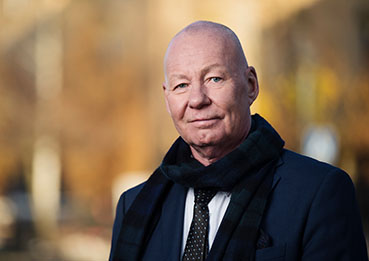The future is always uncertain, but we know that KTH’s position as a leading internationalised and successful university needs to be nurtured. It is essential to build the university in such a way that as many resources as possible can be used for education and research, that we have room for strategic recruitment within the framework of a well-thought-out career system, that our educational programme is designed to be attractive to foreign talent and that our successful work in attracting external competitive funding can be combined with ambitions for a long-term approach and a good working environment for our employees.
Part of all this is of course also how our physical environment should look and how we should distribute activities between our different campuses. This issue has also been put under extra pressure because economic realities and previous board decisions mean that we must find ways forward that involve a more optimised and lean use of our premises. But, and I have at least said this all the times the issue has been discussed, in order to make major changes that affect our campuses, the future picture must be shaped around goals that involve business development.
For both Södertälje and Kista, there are long-term advantages to a single location, and the Board has now confirmed the direction of further work. It is therefore time to start the more detailed work of planning how the Board’s decision will be realized. It is almost obvious that the details must come as a result of knowing the long-term goal.
KTH has important industrial partners throughout the country and also has structured strategic partnerships with 15 different private and public partners. Within the framework of these agreements, collaboration has also been established with large parts of KTH from our closest partners in Södertälje and Kista.
We intend to continue to develop this work and also to expand the partnerships through more targeted initiatives. KTH is also prepared to be on site in other ways than what the current model has entailed, for example via learning centre environments, for lifelong learning or with various demo arenas or similar.
The responsibility that falls to the university management and board is largely about creating conditions, resolving challenges that the various parts of the organisation cannot handle, supporting successful development efforts and taking up the major future issues for joint discussion and problem solving.
Right now, work is also underway to shape KTH’s business plan and multi-year development agenda both at the central level and within each school. When we have new faculty boards and faculty council in place, I hope that we will also have more forums for discussing our long-term future issues.
It goes without saying that change is difficult. But the fact that it is difficult does not mean that we can refrain from implementing the changes that we believe will lead KTH to a more favourable position in the longer term.

